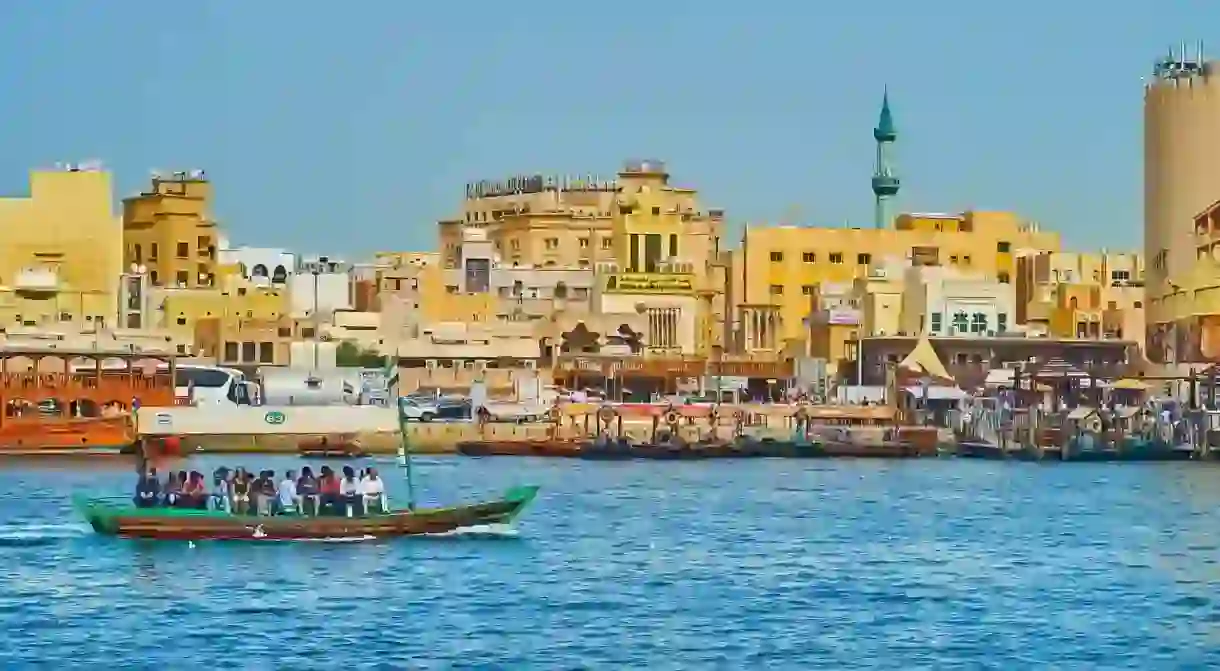The Best Things to do in Bur Dubai

West of the bustling Creek, Bur Dubai is where it all began centuries ago; when architecture meant mud and palm thatch rather than concrete and steel and when getting around was by abra (boat) rather than Uber. The historical remnants of Dubai are under ever-increasing threat from encroaching modernity in this glinting Emirate but it is still possible to delve into its past. From cultural breakfasts with locals to markets selling traditional fabrics and food, here’s our list of the top things to do in the bustling area of Bur Dubai.
Al Fahidi Historical Neighbourhood
Architectural Landmark
This peaceful neighbourhood, formerly known as the Bastakiya Quarter, is where you head for a tranquil escape from the thrum of the more overdeveloped parts of Dubai. What was once a run-down merchants’ quarter is now a restored heritage area, laced with slender lanes of sand-coloured buildings. Think of it as your one-stop Dubai cultural zone. As you wander, you’ll happen upon museums, craft shops and appealing courtyard cafes. Look upwards to see the area’s signature wind-towers (barajeel) – 19th-century equivalent of air-conditioning.
Dubai Museum
Museum

Sheikh Mohammed Centre for Cultural Understanding
Art Gallery, Building
Majlis Gallery
Architectural Landmark, Art Gallery
Old Souk
Market

The Dubai Heritage Village
Architectural Landmark
This place in the Al Shindagha historic neighbourhood was conceived in 1997 to showcase local customs, traditions, professions and craftsmanship. Among the highlights are a traditional homeopathic clinic which operates between October and March. While you’re here, snap up a handmade souvenir or two – gifted artisans work in areas as diverse as whistle-making, jewellery and cotton trading. Try and squeeze in an Arabian folkloric performance – suggested titles include Razfa, Ayyala, Harbeya and El-Dan – and watch dances that have deep roots in Africa.
Dhow Cruise Dinner
Restaurant, Middle Eastern

Gliding on the waters of Dubai aboard a traditional dhow never loses its lustre. It’s a city tour that is as feel-good as it is photogenic. If you can, book a cruise departing after dark so and enjoy the romance of moonlight dancing on the ripples. It’s great fun for all the family, too. The ticket price includes a buffet dinner which features traditional as well as international dishes.
Meena Bazaar
Bazaar, Market, Shop
Dolphin Bay
Natural Feature
Dolphin Bay is the world’s largest, contemporary habitat for man’s best (finned) friend. There are all kinds of encounters suitable for all ages. You can stand in shallow water, scuba dive alongside dolphins or sign up for a royal swim package and be gracefully towed along by the beasts themselves. If that sounds too close for comfort, buy an observer’s pass. A great option for young ones are classes about dolphins’ anatomy. They’ll come away knowledgeable as well as protective of these magical creatures.
Global Village
Market, Shop

Creek Park
Park
The second largest park in Dubai nuzzles close to Dubai Creek. Huge swathes of well-tended grass and flower-filled botanical gardens adorn the park. A children’s play area and picnic spots make it an attractive place for a family day out. For the energetic, bikes are for a hire for a few dirhams.
Dubai Frame
Architectural Landmark

An Instagrammer’s dream, this oversized linear structure spectacularly frames views of both old and new Dubai. Inside there’s a multi-media gallery with exhibits on the past, present and future of the Emirate. In keeping with Dubai’s love of superlative buildings, the 150m- (492ft) high glass, steel and concrete spectacle is trumpeted as the largest frame in the world and also serves as an observation tower.
Dubai Creek
Natural Feature
Dubai Creek is something of a working attraction. This saltwater artery, which connects Deira to the north and Bur Dubai to the south, is eternally busy with traditional wooden dhows crisscrossing the water. The commercial lifeblood of the city, it’s also a super-relaxing way to sightsee. Hop aboard one of the abras (water taxis), which run every few minutes between the souks of Deira on the northeastern bank and the historic district of Bur Dubai on the southwestern bank.
Dubai Garden Glow
Amusement Park

Jo Fernandez-Corugedo contributed additional reporting.













